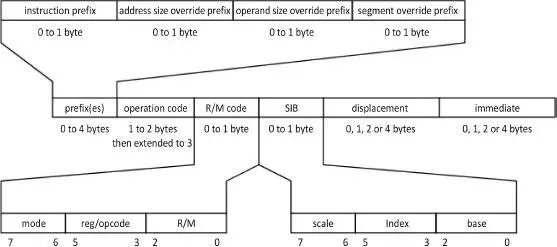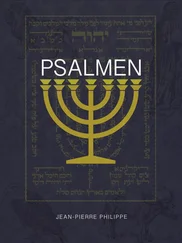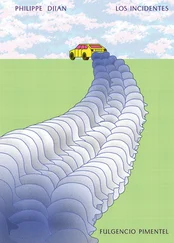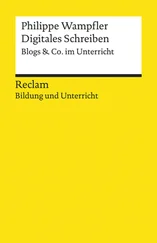Philippe Darche - Microprocessor 4
Здесь есть возможность читать онлайн «Philippe Darche - Microprocessor 4» — ознакомительный отрывок электронной книги совершенно бесплатно, а после прочтения отрывка купить полную версию. В некоторых случаях можно слушать аудио, скачать через торрент в формате fb2 и присутствует краткое содержание. Жанр: unrecognised, на английском языке. Описание произведения, (предисловие) а так же отзывы посетителей доступны на портале библиотеки ЛибКат.
- Название:Microprocessor 4
- Автор:
- Жанр:
- Год:неизвестен
- ISBN:нет данных
- Рейтинг книги:4 / 5. Голосов: 1
-
Избранное:Добавить в избранное
- Отзывы:
-
Ваша оценка:
- 80
- 1
- 2
- 3
- 4
- 5
Microprocessor 4: краткое содержание, описание и аннотация
Предлагаем к чтению аннотацию, описание, краткое содержание или предисловие (зависит от того, что написал сам автор книги «Microprocessor 4»). Если вы не нашли необходимую информацию о книге — напишите в комментариях, мы постараемся отыскать её.
Microprocessor 4 — читать онлайн ознакомительный отрывок
Ниже представлен текст книги, разбитый по страницам. Система сохранения места последней прочитанной страницы, позволяет с удобством читать онлайн бесплатно книгу «Microprocessor 4», без необходимости каждый раз заново искать на чём Вы остановились. Поставьте закладку, и сможете в любой момент перейти на страницу, на которой закончили чтение.
Интервал:
Закладка:

Figure 1.4. An instruction with several operands
By construction, the format of the instruction is fixed (fixed length), short or long, or variable (variable length). The value of a fixed format is a multiple of the byte in general. Its value will have a direct consequence for the incrementation value of the Program Counter (PC, cf . § V3-3.1.3). The benefit is that it will be possible to align the instructions ( cf . § 3.1.2), thus accelerating memory reading or writing by reducing the number of memory accesses. The division of the instruction into subfields, for example, one for the instruction class ( cf . Chapter 2), the second for the function, the third for the type of operands and the last for the operands and a unique format allowing simplification of the hardware, the counterpart being a larger format. A variable format, a multiple of the MPU data format, complicates the Control Unit (CU), and it has an impact on the number of machine cycles ( cf . § V3-2.4.1) needed for decoding. During this phase, the decoder should determine the size of the instruction as quickly as possible. This information is needed, for example, for debugging, to determine the instruction boundaries or limits in the machine code ( interruptible “at instruction boundaries” ). On the other hand, it has the advantage of obtaining programs that take up less memory. In fact, a simple instruction such as nop (no operation, cf . § 2.8.5) will classically take up one byte compared to a word with several bytes with a fixed format. The format's variability makes it difficult to use a pipeline or a superscalar execution (this will be covered in a future book by the author on microprocessors). As an example of a fixed format, we cite the format n = 32 bits for MIPS Technologies microprocessors. Even if the format is fixed, the number of fields may vary as well as the format. Encoding uses three types, which are Register (R-type), Immediate (I-type) and Jump (J-type) format (Figure 1.5). The operation code, completed possibly by the function field, specifies the instruction. For the first type, the second field is a specifier of the source register (rs). The following specifies the target or destination register (rt or rd), which receives the result or branching condition. The last field is an immediate value, a jump or address displacement. For the J type, the operand is the jump address in a 26-bit format. For the last type, the third field is a destination register specifier (rd). The penultimate field indicates the value of a possible shift (0 = no shift). Note the conventions rt = rs + immediate and rd = rs + rt. This simple encoding should be compared with that of the Arm ®family, which can show as many as 21 types (Arm 2000).

Figure 1.5. Three fixed formats for MIPS instructions
None of these different fields have been standardized and are dependent on the manufacturer and the MPU family. For example, for Bayliss et al . (1981), an instruction is formed of four fields, which are the function fields (opcode), reference fields, and format and class fields. The class specifies the number of operands and their types. The necessary format field if there is at least one operand indicates their location (memory, register or pile, for example). The reference field gives their location explicitly. Their operation code field specifies the operation to be executed.
Figure 1.6 shows the typical variable instruction of an existing microprocessor. The instruction code has a format of 6 bits. The direction bit D indicates the direction of transfer (0 = source specified by the field reg, 1 = destination specified by the field). The bit W specifies the transfer format (0 = byte, 1 = word of 16 bits). The 2 rdbyte is called a “post-byte”. The mode field indicates whether the transfer involves only the registers or if the memory is involved, the two displacement fields therefore indicate the length of the latter. We recognize the Little Endian byte order (LE (Cohen 1981), cf . § 2.6.2 from Darche (2012)) typical of Intel architecture since the Least Significant Byte (LSB) is first stored in the memory, in the order of the increasing addresses. To finish, the R/M (Register/Memory) field, poorly named, specifies the addressing mode, that is, the method of calculating the effective address ( cf . § 1.2). Another format exists where the instruction is coded on a single byte. Thus, the format of these instructions can vary from 1 to 6 bytes. It is possible to add to these three types of prefix to modify the behavior of the instruction.

Figure 1.6. Typical instruction format from 8086/88
The architecture can also add a field, before or after the operation code to code the instruction class (called an extension of the operation code) or to specify a variable format. One example is the central IBM System/370 computer with its first 2 bits. The encoding of one instruction of the i486 by Intel is a typical example of the CISC approach (Complex Instruction Set Computer, this will be covered in a future book by the author on microprocessors). This type of instruction has a size ranging from 1 to 13 bytes. The word-code is therefore formed of one or two bytes for the operational code, a modify Register or Memory (mod R/M) byte, a ScaleIndex-Base (SIB) byte, the bytes for displacement and the bytes for the immediate values. The reg/operation code field specifies a register or makes it possible to add information for the operation code. The R/M field specifies a register (2 3at most) or, if it is combined with the mode field, makes it possible to specify a mode of address (24 maximum). The SIB byte makes it possible to specify the scale factor (0, 2, 4 or 8), an index register number and the base register number. In addition, one or more prefix bytes (in any order except for REX, see below) can change how the following instruction is interpreted. Figure 1.7 shows the instruction format for Intel IA-32 and Intel 64 architectures, which has changed with the evolution of MPUs. For example, the operation code for Pentium had a maximum size of two bytes. Today, the maximum length of an instruction is 15 bytes. The format for the instructions has not ceased growing.
Another example is Arm ®architecture, which, to the left of the operation code, adds a condition field (Figure 2.23). Today, there are sets of instructions in multiple formats, a sort of compromise between fixed and variable formats with only two formats, for example, 32 bits and another value such as 16 bits with 19 different forms of encoding for Thumb ®(Arm ®) technology linked to the compression of these instruction codes ( cf . § 1.1.1).

Figure 1.7. Variable instruction format Intel IA-32 and Intel 64 (Intel 2016) architectures
Several technical solutions exist for retaining ascending binary compatibility ( cf . § 3.3.3). Intel has chosen the instruction prefix. It affects how the instruction is interpreted. For example, a REX (Register Extension) prefix in 64-bit mode that indicates that the instruction uses extended registers is a valid instruction ( incor dec) in IA-32 mode. This solution had already been used by Z80 with four non-assigned machine codes (hexadecimal values CB, DD, ED and FD as prefix) to expand its compatible instruction set with 8080. Another solution was to add a post-byte to distinguish between the sets of instructions. One recent example is the VEX prefix for Vector Extensions, which makes it possible to encode the AVX (Advanced Vector eXtensions, cf . § 2.7.1) extension from Intel.
Интервал:
Закладка:
Похожие книги на «Microprocessor 4»
Представляем Вашему вниманию похожие книги на «Microprocessor 4» списком для выбора. Мы отобрали схожую по названию и смыслу литературу в надежде предоставить читателям больше вариантов отыскать новые, интересные, ещё непрочитанные произведения.
Обсуждение, отзывы о книге «Microprocessor 4» и просто собственные мнения читателей. Оставьте ваши комментарии, напишите, что Вы думаете о произведении, его смысле или главных героях. Укажите что конкретно понравилось, а что нет, и почему Вы так считаете.












